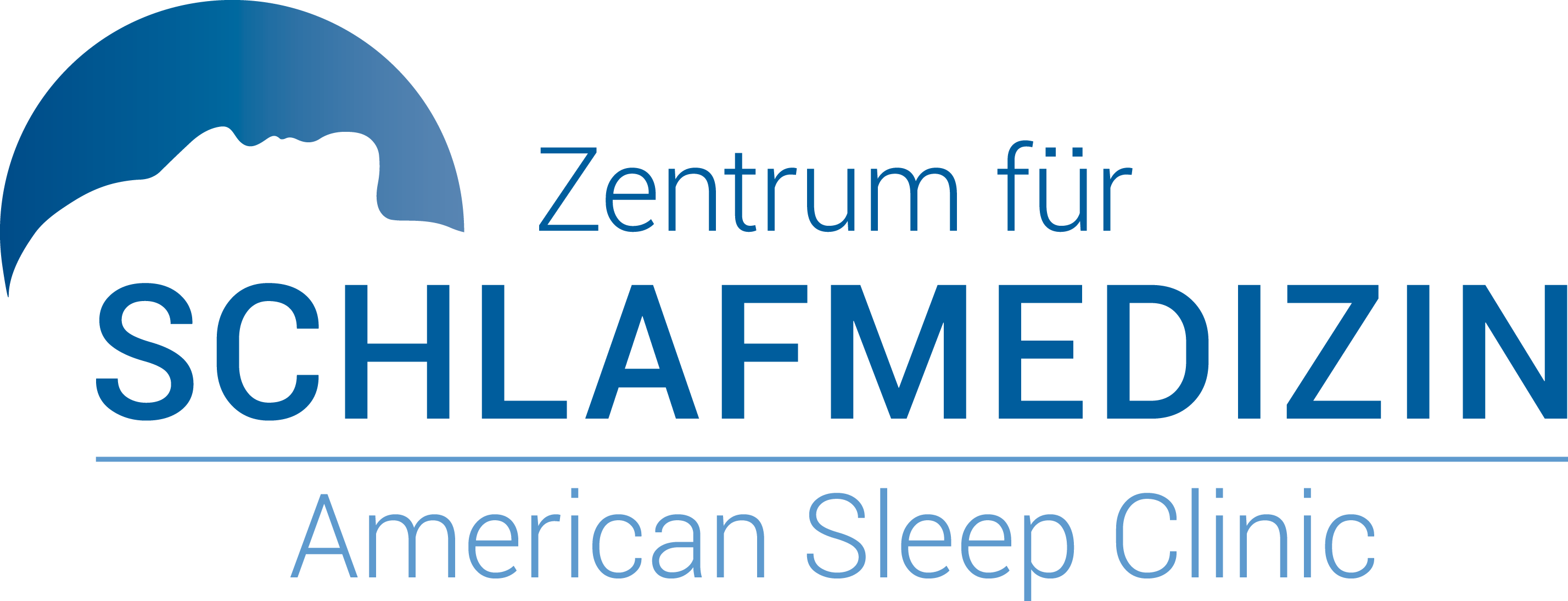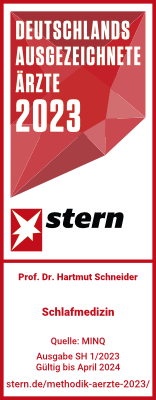Diagnostic Methods
The American Sleep Clinic in Frankfurt offers a comprehensive, multidisciplinary diagnosis of all forms of disturbed sleep, that are listed in the „International Classification of Sleep“.
Sleep disorders often have very diverse causes. Therefore, we always work hand in hand with other disciplines too. How are sleep disorders diagnosed?
The following shows a short overview of the diagnostic methods that we use:
1. Detailed sleep history by means of conversation and questionnaires
The most important diagnostic tool of a doctor is his spoken word. In the patients history he will discuss their symptoms. To ensure that no important topics are overlooked, we offer our questionaires.
2. Cardiorespiratory Polysomnography
This part belongs to the center of your sleep medicine examination. Several sensors/electrodes are attached to the body to derive various bio-signals such as brainwaves, muscle tone, blood oxygen saturation, etc. The sensors record the signal of all the organs which are significant for your sleep study. Major organ systems for sleep physicians are the brain, the central nervous system, respiratory, the cardiovascular system and motor activity.
3. Cardiorespiratory Polygraphy (Home Sleep Test)
Cardiorespiratory Polygraphy is an outpatient measurement of bio-signals which can also be carried at home. For a first orientation, they can be quite helpful. However, the number and quality of the deterministic mined parameters for a reliable statement are often too low.
This applies especially for:
- the clarification of initiating and maintaining sleep
- the clarification of sleep-related problems in children
- the clarification of neurological and psychiatric disorders the clarification of daytime fatigue or daytime sleepiness the selection of appropriate forms of therapy for sleep-related breathing disorders,: such as ENT surgery, dental splints, CPAP (oft mask therapy, sleeping mask, snoring mask or positive pressure breathing called) or tongue pacemaker (Inspire TM therapy for stimulation of the upper airway, hypoglossal pacemaker), N. phrenic pacemaker (Respicardia®, remedē® system), Velumount TM -Schnarchspange
- the clarification of central breathing disorders during sleep
- the clarification of setting problems with the CPAP therapy, and like forms of therapy (ASV = Auto servo ventilation in heart failure, BiPAP = BilevelPAP, APAP = auto CPAP, CPAP with Ausatemdruckabsenkung = Exspiratory Pressure Relief = EPR or C-Flex)
- Measuring the collapse pressure (P crit) of the upper airways
This is used for a better assessment of therapeutic success with certain types of therapy of obstructive sleep apnea, e.g in ENT medical interventions or weight loss.
4. Actigraphy
It enables the measurement of the sleep-wake schedule and the estimate of the sleep duration and efficiency in everyday life.
5. L-dopa test in restless legs syndrome
Medication (levodopa) for confirmatory diagnosis of Restless Legs Syndrome
6. intercostal EMG
To determine respiratory effort, we use a gentle and tested measuring method using intercostal EMG.
7. Multiple Sleep Latency Test (MSLT)
This is used to record sleep pressure during the day.
8. Maintenance of Wakefulness Test (MWT)
It documents to which extent a person is able to stay awake.
9. Reaction time test (SRT / PVT)
The tests allow conclusions on cognitive short-day performance.
10. Physical examination
It gives us information about possible causes or therapeutic approaches for your complaints. For example, the size of the tonsils in obstructive sleep apnea can be crucial to the success of surgical treatment.
11. With Pupillography we can:
— Objectively measure sleepiness
— Test autonomic functions
— Record central effects of drugs
— Examine stress and circadian rhythms

